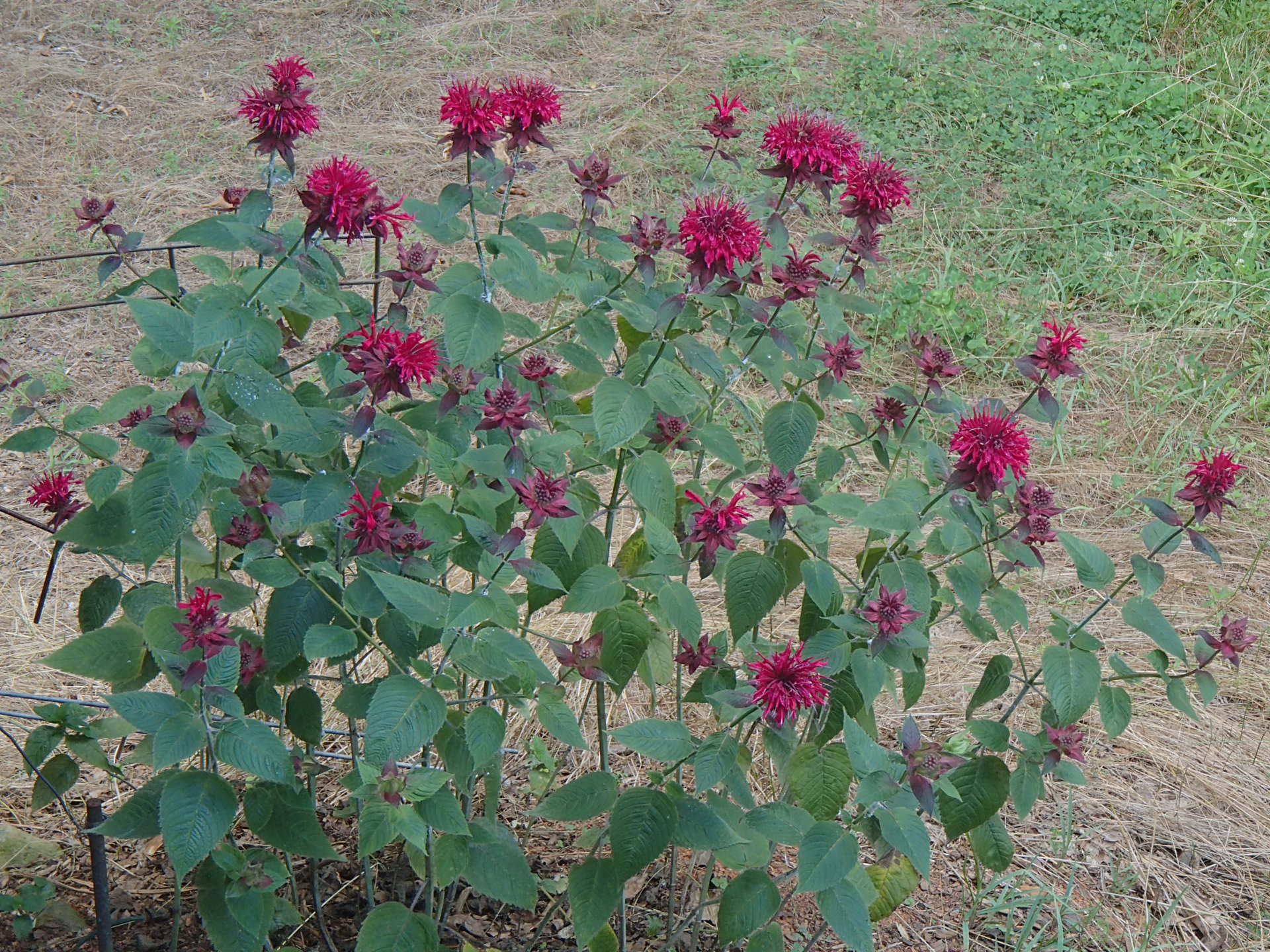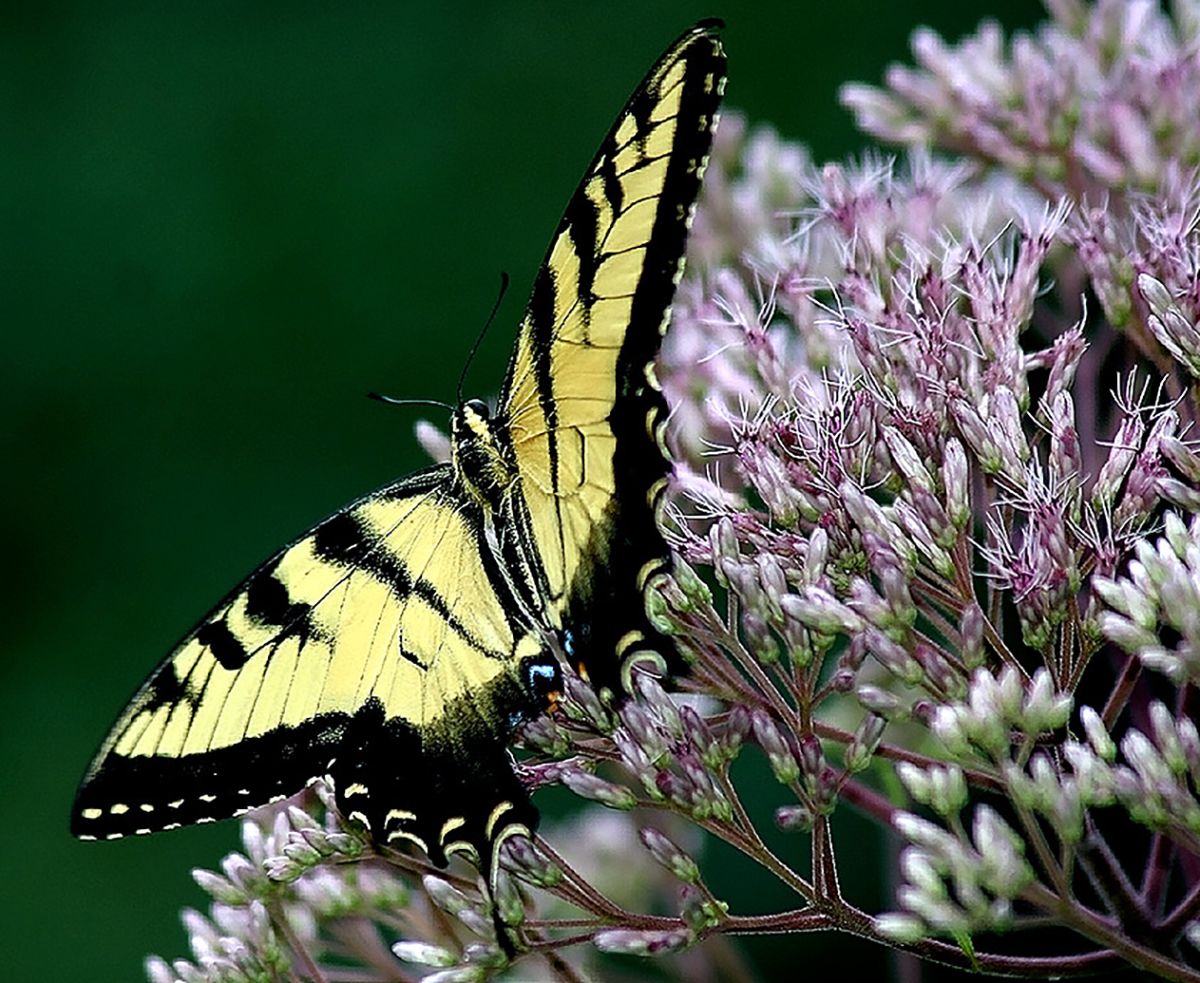NURSERY HOURS
Wednesday: 10-4 Thursday: 10-6 Friday-Saturday: 10-4 Sunday: 12-4
April 29, 2019
Allium cernuum
Nodding Wild Onion is a delightful member of the onion family, a perennial herb which is beautifull as well as hardy and well behaved in the garden. Flat, grass-like leaves emerge as a clump from rhizomatous bulbs, followed by taller, round, leafless flowering stalks which bend over, dangling clusters of dainty…
April 29, 2019
Helianthus ‘Mellow Yellow’
Swamp Sunflower is a clump-forming, upright, late-blooming perennial sunflower — the latest flowering of the sunflowers (October and even November). It is found in bottomlands, swamps, and other natural wet habitats as well as in disturbed wet areas, on roadsides and in ditches. It thrives in full sun in moist soils…
April 29, 2019
Lonicera ‘John Clayton’
This plant is not currently for sale. This is an archive page preserved for informational use. John Clayton’ is a cultivar of Coral Honeysuckle’s forma sulphurea (yellow form). It has the same charming leaf forms as Coral Honeysuckle and lovely warm yellow 2-inch trumpet-shaped flowers. It blooms in late spring,…
April 29, 2019
Phlox ‘Jeana’
Garden Phlox is a staple of the late summer and early fall garden and ‘Jeana’ is a super-rewarding cultivar of it to grow. It provides wonderful color with its bright pink, aromatic flower clusters, attractive to people, butterflies and hummingbirds alike. Named after a woman in Nashville who identified this genotype,…
February 28, 2019
Viburnum acerifolium
Mapleleaf Viburnum is native to much of Eastern North America, inhabiting upland, dry woods. In NC, it is reported in mountain and piedmont counties only. It is a smaller member of the Viburnum genus, averaging only 4-6 feet tall. It suckers strongly, however, and forms colonies of sparsely branched shoots, and…
February 28, 2019
Viburnum dentatum
Southern Arrowwood is a dense, 8-10-foot shrub native to Eastern U.S. It is composed of many upright, spreading, straight stems and bears typical-Viburnum 3-inch, flat-topped corymbs of small creamy white flowers followed in mid-summer by blue-black seeds which generously support a range of birds and other animals. It is so useful…
February 28, 2019
Viburnum prunifolium
Smooth Blackhaw, native to much of mid-latitude Eastern and central U.S., is a large deciduous shrub or small tree which usually grows to around 15 feet tall and wide, but if grown as a single-stemmed tree form, it can reach up to 30 feet. It thrives in full sun to part…
February 28, 2019
Wisteria frutescens ‘Amethyst Falls’
Wisteria frutescens is a deciduous, woodland flowering vine 25 – 30′ in length, native to the coastal plain along our southeastern states, around along the Gulf coast over to Louisiana and up the Mississippi Rivery valley to Arkansas and Kentucky. It grows in damp habitats. The forest-threatening, thuggish Asian wisterias (both…
February 28, 2019
Solidago odora
Sweet Goldenrod is found in open woods and savannahs in coastal states from New Hampshire south to Florida and over to east Texas, and inland as far as Missouri. (In northern Florida there is a separate subspecies, Chapmanii.) It occurs in most of the counties of NC. Sweet Goldenrod grows to…
February 28, 2019
Staphylea trifolia
American Bladdernut is an interesting understory shrub or small tree found in sometimes large colonies in Piedmont bottomlands and woodland thickets from the eastern mountains and piedmont into the midwest as far as Kansas and Oklahoma. It is not difficult to identify: Bladdernut typically grows 10-15′ tall, with opposite, trifoliate leaves,…
September 17, 2018
Monarda didyma
Beebalm is a showy herbaceous perennial herb in the Mint family, very popular in Southeastern gardens for its long bloom time and easy nature. Bright red, somewhat coarse flowers are supported by sturdy, three-foot tall, square stems in July and August here in the piedmont, making excellent cut flowers.Our southern Appalachians…
September 17, 2018
Onoclea sensibilis
Sensitive Fern is a very handsome, very vigorous, running deciduous perennial fern. It is “sensitive” only to the first frost in the late fall, and perhaps to drought — but very hardy otherwise! It is widely reported to be two- to three-foot tall and taller in wet soil, but we have…
September 17, 2018
Phlox maculata
Speckled Phlox is an upright, clumping, herbaceous perennial with beautiful bright clusters of small, aromatic, tubular flowers. It grows in moist meadows, along riverbanks and in bottomland woodland openings in the eastern mountains and piedmont and in the midwest, although it is not really common in the wild. Generally unbranched, the…
September 17, 2018
Phlox stolonifera ‘Sherwood Purple’
Phlox stolonifera, or Creeping Phlox, is a low-growing Phlox found in rich deciduous woodlands, along stream banks and shaded rocky slopes mostly in the Appalachian Mountains from Pennsylvania to Georgia. Unlike the other ground-hugging Phloxes, therefore (which hale from more xeric locales), this one thrives in shady and semi-shady niches on…
September 17, 2018
Juniperus virginiana
Eastern Red Cedar is a sturdy, aromatic, evergreen, pyramid-shaped or columnar tree which usually grows to about 60 feet, though it can reach 90 feet. This species is considered a pioneer tree that colonizes sunny areas that are relatively dry and sterile. Adapted to dry habitats, it is native throughout central…
September 17, 2018
Juniperus virginiana ‘Blue Arrow’
‘Blue Arrow’ is a cultivar of Eastern Red Cedar, an evergreen tree of wide variability in form, seen on roadsides and hedgerows throughout the eastern U.S. ‘Blue Arrow’ was selected to provide a reliable, vertical evergreen accent in a more formal landscape. Red Cedar (the species) is dioecious, with seed cones…
September 17, 2018
Juniperus virginiana ‘Poyo’
Juniperus virginiana is a tough, widely distributed native evergreen tree with many outstanding attributes (see our listing for the species) and ‘Poyo’ is a dwarf, spreading cultivar which displays most of the attributes of the species, but answering a need for a shrub-like form. Since it is asexually propagated (is a…
September 17, 2018
Lonicera sempervirens
It is a joy to write about Scarlet Honeysuckle today because as I write, the intensely scarlet flowers are brightening up the green world along my driveway. Because it is a climber, the deep crimson color meets the eye at different elevations (although it does not seem to flower on the…
September 17, 2018
Eutrochium dubium ‘Little Joe’ (formerly Eupatorium)
Coastal Plain or Dwarf Joe Pye, E. dubium, is a tough, rewarding late-season herbaceous perennial whose family must be represented in the native garden. It is very handsome, the fragrant mauve to pink flowers appearing in cone-shaped clusters on red stems in late summer and lasting through fall, similar in many…
September 17, 2018
Eutrochium fistulosum
Joe-Pye Weed is an impressive (six to nine feet), erect, sun-loving perennial which is found mostly in wet thickets and stream margins from Quebec to Texas. Leaves are lance-shaped and whorled around the hollow stem (a diagnostic character for the species). The stems, which are mostly unbranched, are green below with…
September 17, 2018
Fagus grandifolia
American Beech is one of the most beloved trees of Eastern North America, a late-successional tree reported in many counties of NC from the mountains to the coast. It is a medium to large tree, growing usually to 80 feet (but observed also at 100 feet tall or more), and can…
September 17, 2018
Heuchera americana
Heuchera, or Alumroot, or Coral Bells is a wonderful, low, evergreen perennial with beautiful foliage which remains attractive year ’round if its cultural requirements are met. It does flower, but is often grown purely for its rich, patterned foliage which shows a wide array of leaf colors, patterns, shapes, and sizes.…
September 17, 2018
Hydrangea radiata
Until recently, Hydrangea radiata was considered a subscpecies of Hydrangea arborescens, and they are very similar. Both are fast-growing and short-lived woody shrubs 3-6 feet high and wide. Both present a rounded form, with many, scarcely branched, twisting stems, shreddy bark, and white, flat-topped floral assemblages called corymbs, 3-6 inches across,…
September 17, 2018
Euonymus americanus
Strawberrybush, or Hearts-a-Bustin’, is a unique, rhizomatous shrub with an unusual form that occurs in shady woodlands throughout the Southeast to Eastern Texas. Plants are 4-6 feet tall and multi-stemmed. The individual shoots are pencil-like and green with little branching. Leaves are long (~2 inches), opposite, and lance-shaped, colorful in fall.…
About the author

Proin volutpat vitae libero at tincidunt. Maecenas sapien lectus, vehicula vel euismod sed
Categories
Popular Posts
Instagram
Follow us
































